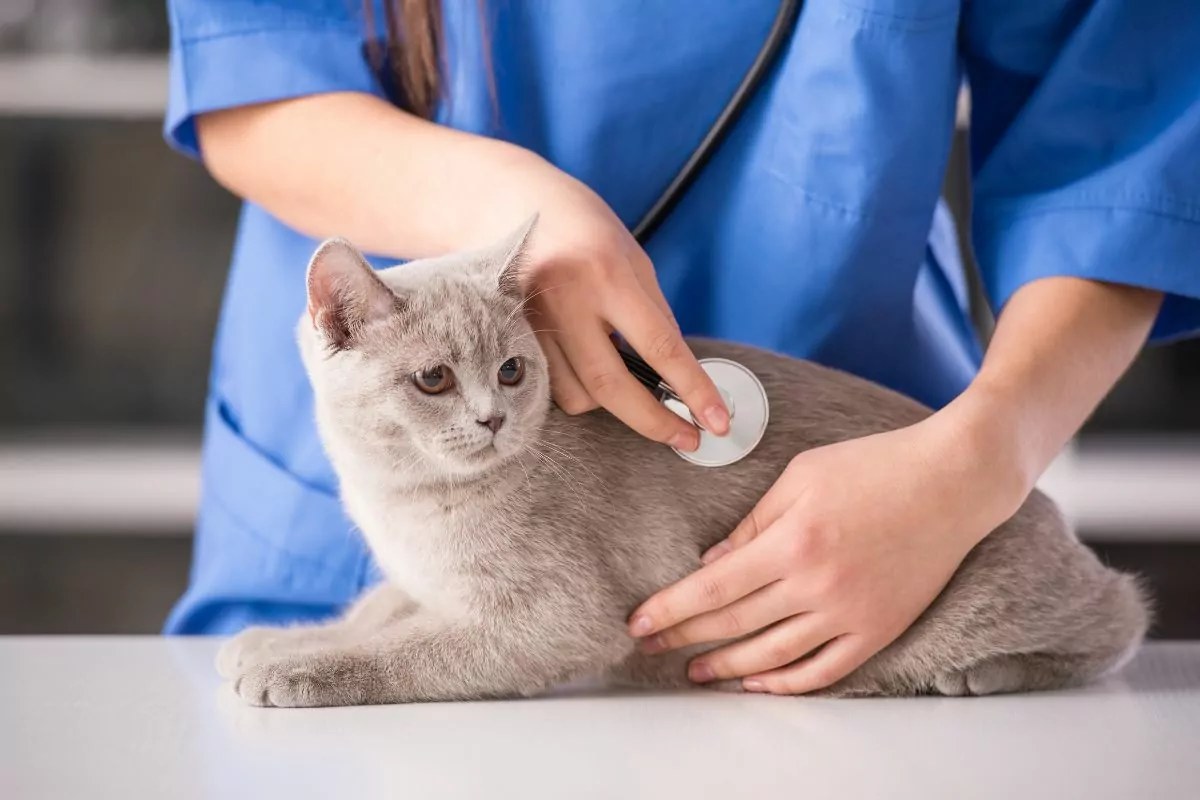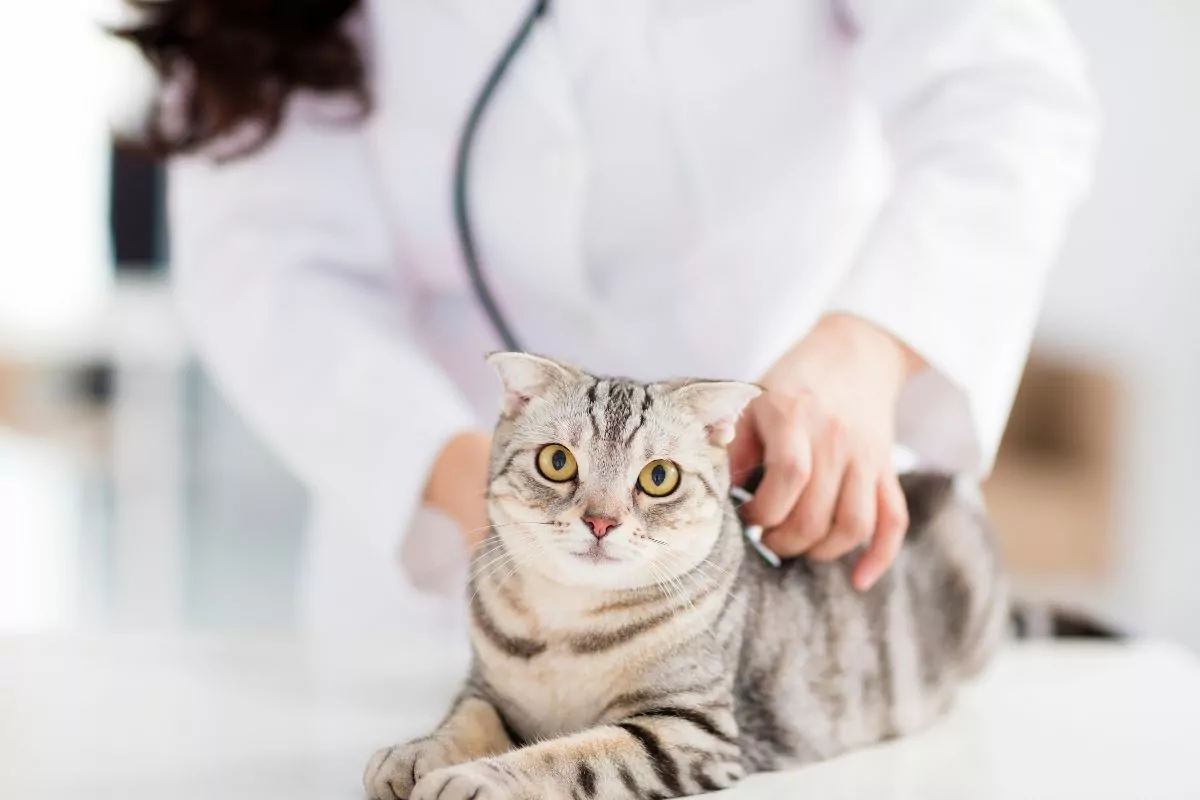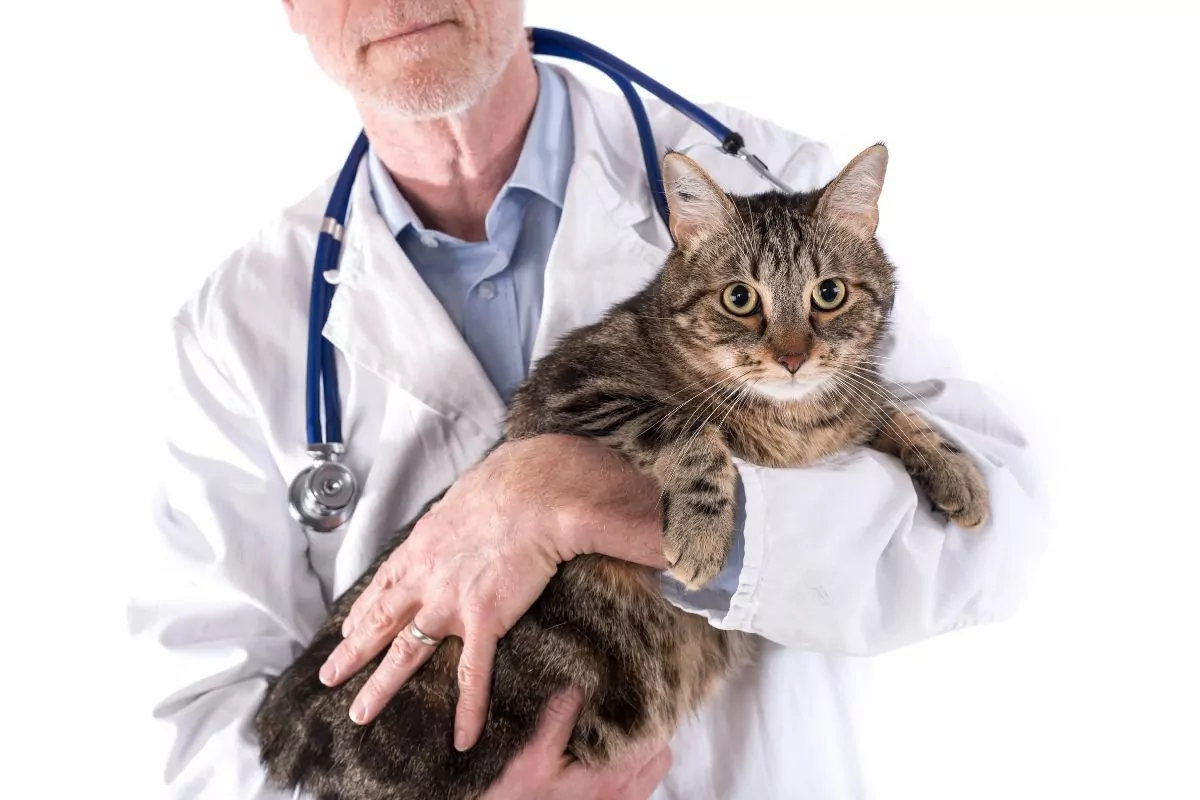Felines and Congestive Heart Failure
The diagnosis of congestive heart failure in cats is sometimes overwhelming for owners, so let’s look into the details to understand the condition better.
Heart problems in cats occur when a cat’s heart fails to fulfill basic cardiac output needs. The inadequate output from the heart means it cannot pump blood effectively, resulting in several consequences that lead to congestive heart failure (CHF).

The Stages of Congestive Heart Failure in Cats
The heart is responsible for pumping blood to the entire body to provide vital organs and organ systems with oxygen and nutrients and transport metabolic waste products and carbon dioxide. When the heart no longer performs its role efficiently, the entire body becomes negatively affected.
If a veterinarian suspects heart disease, the cat needs a full cardiac assessment to stage CHF. Heart failure is a progressive condition, so even though patients may not show symptoms clinically, they still risk developing symptoms later.
ACVIM Congestive Heart Failure in Cats Stages:
- Stage A is the pre-clinical term for cats with cardiomyopathies but no clinical signs yet. This stage includes cats genetically predisposed to developing heart diseases, such as American Shorthairs, British Shorthairs, Maine Coons, Persians, and Ragdolls.
- Stage B indicates evidence of cardiopathy but without manifestations of clinical symptoms. Stage B subdivides into:
- B1 includes cats at low risk of rapidly developing CHF or arterial thromboembolism (ATE).
- B2 includes cats with a high risk of rapidly developing CHF or ATE.
The size of the atria determines which cats get staged as either B1 or B2.
- Stage C includes cats with clinical signs of CHF or ATE. If the patient responds well to treatment, they remain in Stage C.
- Stage D occurs when cats become refractory to medication, also known as end-stage congestive heart failure in cats.
The Causes of Feline Congestive Heart Failure
This condition’s subclinical and progressive nature often leaves owners wondering what causes congestive heart failure in cats.
The broad term congestive heart failure describes when the heart compensates for a decreased cardiac output, resulting in higher blood pressure and lung congestion, leading to pulmonary hypertension and fluid accumulation.
Heart failure in cats occurs due to an underlying disease process. The leading cause of CHF in cats is hypertrophic cardiomyopathy (HCM). HCM occurs due to damage to the muscle fibers in the heart chamber walls, making them thicken and stiffer. HCM has a high genetic incidence level in Main coon and Ragdoll cats.
The thickening of the heart’s muscular walls impairs the heart chamber’s ability to fill, contract, and eject blood effectively. The reduced outflow leads to increased backflow that increases blood pressure in the lungs resulting in pulmonary hypertension and edema. Ascites result from portal hypertension in the liver, which is rarely present in cats.
Congestive heart failure in cats also occurs secondary to the following conditions:
- Hyperthyroidism – CHF secondary to hyperthyroidism is potentially reversible, so it is essential to investigate the underlying cause of CHF.
- High blood pressure due to renal insufficiency.
- Defects in the ventricular or atrial septums.
- Pericardial effusions.
- Arrhythmias.
- Neoplastic or benign masses around or within the heart.
- Anemia.
- Pregnancy.
Depending on the condition’s causes, heart failure may affect cats of various ages, breeds, and genders but middle-aged to senior cats present most often with CHF.
Signs and Symptoms of the Condition
Most symptoms of congestive heart failure in cats start subtly and progress slowly. The primary concern in cats with heart conditions begins with labored breathing. Increased blood pressure leads to fluid leaking into the chest, impairing the lung’s ability to perfuse blood.
Common cat heart failure symptoms include the following:
- A wet cough occurs when the cat lies on its chest.
- Decreased energy levels.
- Weight loss.
- Syncope.
- Depressed appetite.
- Distended abdomen.
- Saddle thrombi are blood clots that cats with heart disease have a high risk of developing in their hind limbs. Owners must monitor their cats for signs of sudden and severe pain in the hind limb causing limb dysfunction.
Cats are stoic creatures that do not show illness as obviously as other animals, so owners often miss symptoms because they are so subtle.
To detect the signs of congestive heart failure in cats, owners must monitor their pets closely; especially breeds predisposed to heart conditions. Cats that show sudden exercise intolerance and shortness of breath need veterinary attention as soon as possible.

How is CHF in Cats Diagnosed?
Almost half of the cats that present with heart disease do not have detectable heart murmurs, so diagnosis only occurs if there is a genetic predisposition, incidental findings from unrelated disease processes, or if clinical symptoms have already manifested.
A vet will complete a clinical examination and take a thorough history if they suspect underlying heart problems in cats. Tests used to diagnose heart disease in cats include the following:
- Lab tests include complete blood counts, serum chemistry, total T4, and TSH. A urine analysis also helps to determine if any renal disease is present.
- Electrocardiography shows any changes in the heart rate and rhythm with an ECG report. Most cats do not have ECG abnormalities, but some cats with histories of arrhythmias or syncope episodes do.
- Radiographs of the chest mostly appear normal, but some cases show signs of enlarged left atriums or generalized cardiomegaly. Lung patterns and pulmonary edema indicate heart disease, which is of diagnostic value in symptomatic cats.
- Cardiac pro-brain natriuretic peptide (pro-BNP) is a protein released from the ventricular myocardium when the muscle stretches, strains, or injures. It is an excellent test to help detect cardiomyopathies.
- Echocardiography helps visualize the internal heart chambers, and vets use it to assess the heart’s structural changes or abnormalities in blood flow.
It is essential to do thorough testing to determine the cause of heart failure as this helps determine the stage of the disease and potential treatment options.
The Life Expectancy
The underlying cause and prospective treatments affect the prognosis of congestive heart failure in cats. Life expectancy for a cat with CHF depends on its response to treatment, the disease’s progression, and the owners’ compliance, but most cats with end-stage CHF only live for about 1 to 3 months.
Treatment and Prognosis
If diagnosed early, congestive heart failure in cats treatment options yields promising results. The stage of heart disease determines what medication and procedures are necessary to help improve the cat’s quality of life.
If a cat has fluid build-up in the chest or abdomen, vets will formulate a treatment strategy combining medication, hospitalization, oxygen therapy, and drain placement to alleviate the symptoms.
Medications prescribed aim to achieve the following therapeutic results:
- Decrease blood pressure with ACE inhibitors.
- Improve the cardiac output with positive inotropes.
- Decrease or resolve fluid accumulation with diuretics.
- Blood thinners decrease the risk of saddle thrombus formation.
Administering medication to a cat poses challenges for vets and owners. Heart medication requires daily administration, often in oral tablets. Cats sometimes develop food aversion with tablets in their food or fractious behavior when owners try to medicate them. These challenges affect treatment compliance and successful symptom management.
The vet examines the chronicity, severity, primary cause, and response to treatment when determining a congestive heart failure in a cat’s prognosis.
Nutrition in Cats With Heart Problems
The body condition of a cat with CHF is an important prognostic indicator of cardiac disease, so owners need to recognize when their cat is losing weight or muscle mass. If a cat is too thin or fat, it negatively affects its survival time.
Diets with the correct number of calories, high-quality protein, and omega-3 fatty acids provide the best nutritional support to cats with heart disease—diets and treats with low sodium help reduce blood pressure.
A sick cat does not eat well, so owners must monitor their cats closely to ensure their calorie intake remains uncompromised for long periods. To promote food intake, owners may consider the following tips:
- Warm, soft food up and allow the cat to smell the food.
- Feed small, frequent meals daily to offer variety and combat food aversion.
- Add home-cooked meats without added salt, like chicken, fish, or beef.
- Try adding fish oils to their meals which offers several benefits such as omega- 3 fatty acid supplementation, reduction in inflammation, and appetite stimulation.
Where is a Cat’s Heart?
A cat’s heart lies between the third and fourth rib in the chest. The left and right lungs cover the heart, and the heart apex beats strongest on the left-hand side of the chest.
A cat’s heart is oblong and narrow when seen on a chest X-ray, but the changes caused by CHF alter the heart’s appearance and slightly alter the expected location and shape in the chest.
Can the Condition be Cured?
Congestive heart failure often leads to irreversible changes in the structure and functional capability of the heart. These changes mean that the disease is chronic and requires long-term management to cope with the symptoms of the disease.
Cats that respond well to treatment and have compliant owners cope well with CHF, but there is no cure for congestive heart failure. Regardless of treatment, the disease still progresses.
The treatment of CHF aims to preserve the quality of a cat’s life.
If a cat is diagnosed with hyperthyroidism, there is hope to cure the underlying cause of the heart failure. If vets treat and manage thyroid disease effectively, then the CHF has the potential for full resolution.
Can CHF in Felines be Prevented?
The best way to prevent heart failure in cats is early detection and annual veterinary visits with routine blood work. Owners can slow the progression of the disease if diagnosed early and by following treatment protocols strictly.
Monitoring a cat’s activity levels, weight, appetite, and overall body condition is the key to early invention. Being well-informed is also essential for owners with breeds predisposed to heart conditions to ensure they spot symptoms early on in the disease.
Is CHF Painful for Cats?
Heart disease in cats is not necessarily a painful condition, but as the symptoms progress and pulmonary and abdominal effusions increase, the cat’s ability to breathe comfortably becomes compromised. This discomfort, shortness of breath, and increased lethargy compromise the cat’s quality of life.
The clinical signs that make CHF uncomfortable include fluid build-up, vomiting, muscle loss, and chronic coughing. The progression of the disease also results in increased anxiety as cats no longer feel confident in their ability to fight or flee, making them vulnerable.

The Word’s Out!
Feline heart disease is more common than most owners think, affecting around fifteen percent of cats.
Detecting cardiomyopathies in cats poses a big problem for clinicians and owners because cat heart problems are challenging to diagnose. Treatments are chronic, and owners must be comfortable with daily medication administration.
Cats with heart disease have the potential to lead a fulfilled life, but it is crucial to remain aware of their quality of life. Chronic drug administration, respiratory distress, frequent trips to the vet, and hospital stays become stressful for cats, and owners must identify when their cat stops coping.
Early detection of heart disease, closely monitored treatment plans and focusing on a cat’s quality of life help to guide owners and support them on their journey with a chronically ill cat.
